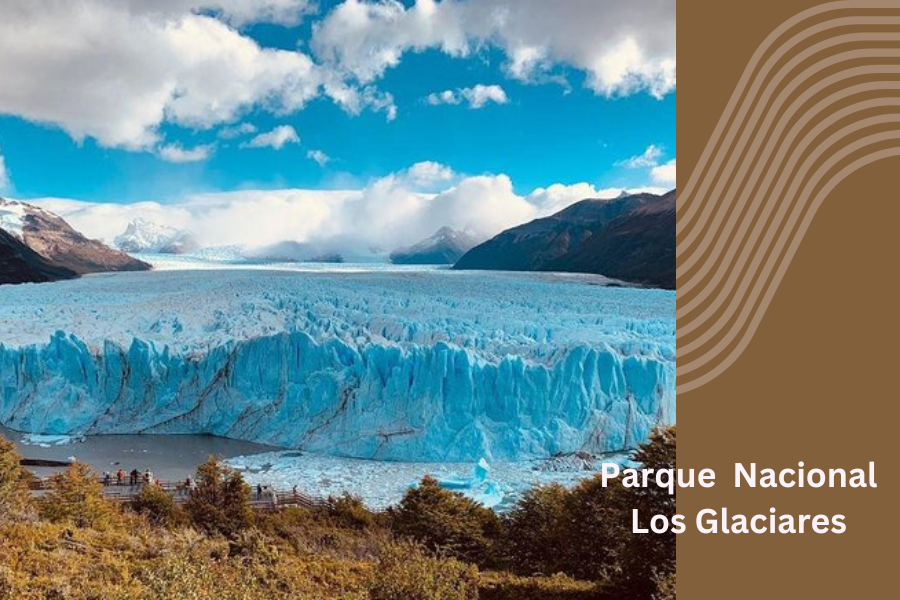
Los Glaciares National Park: the paradise of eternal ice
In the remote heart of Argentina’s southern Patagonia, covering an area of almost 8,000 km2, is one of the largest continental ice reserves ever discovered after Antarctica and Greenland. We are talking about Los Glaciares National Park, a natural paradise with snow-covered peaks, endless snowdrifts and colossal glacier tongues that plunge down from the depths of the Andes.
Cradle of the great Patagonian glaciers
What makes this nature reserve a cult destination for travelers and outdoor enthusiasts from all over the world is the unique concentration of some of the most impressive and massive glaciers in South America. Here you will find true ice giants such as the Perito Moreno, Upsala, Viedma and Spegazzini, to name but a few.
This enormous accumulation of millennia-old glacier masses can be traced back to the southern continental Patagonian ice field. This enormous ice sheet, which covers an area of 16,800 km2 and is formed by the moving glaciers themselves, acts as a kind of “ice factory” that constantly feeds and renews the huge glacier tongues that descend towards the Andean valleys and lakes.
The mouth of the Perito Moreno glacier
The main attraction of Los Glaciares Park is undoubtedly the emblematic Perito Moreno Glacier. This 30 km long and 5 km wide glacier tongue offers one of the most impressive natural spectacles in the world when its millennia-old ice collides with the waters of the Brazo Rico of Lago Argentino.
Here, this ice giant produces the phenomenon of “calving”, in which huge icebergs and masses of ice dozens of meters long plunge into the Témpanos Channel. Witnessing this event up close, combined with the opportunity to walk on the glacier itself, navigate up to its front and hike through natural viewpoints, makes it an unforgettable must-see attraction.
Exploring the pristine glaciers
But the park’s glacier attractions are far from limited to Perito Moreno. The park is home to other ancient ice giants that are just as impressive, albeit less accessible and less explored by mass tourism.
These include the Upsala Glacier, a glacier tongue 60 km long and more than 850 km2 in area, covered with peaks and ice walls up to 70 meters high. Or the Viedma Glacier, considered the largest glacier mass after the Perito itself, with an area of almost 1,000 km2, a 5 km long terminal front and a height of more than 120 meters above Lago Viedma.
Endless valleys carved by the ice
In addition to the glacier tongues themselves, Los Glaciares National Park is also home to some of the valleys created by the erosion of the large glacier mantles that covered the region during the last ice age. Deep depressions, through which meltwater rivers flow today, form real canyons and endless gorges carved into the rock.
One of the main attractions is the small town of El Chaltén, which lies in a remote glacial valley surrounded by untouched mountains such as Mount Fitz Roy and the imposing Cerro Torre. From this tranquil settlement, numerous hiking trails and trekking paths lead into the endless expanses formed by the ancient glaciers.
A paradise for trekking and adventure.
Apart from its impressive scenic attractions, Los Glaciares National Park has become one of the most important destinations for trekking and outdoor adventure enthusiasts in Argentina. Its extensive network of trails allows for all-day hikes and multi-day camping trips in some of Patagonia’s most pristine mountain corners.
Among the most popular routes are the circular route around the Torres del Paine, the hikes to the campsite on the Río Blanco with views of the Fitz Roy or the challenging hike over the moraine of the Perito Moreno to its imposing glacier front. A land of challenges and full connection with nature.
The Patagonian Wildlife Sanctuary
But this huge protected area is not just about glaciers and mountains. Los Glaciares Park is also home to important reserves of Patagonian flora and fauna and serves as a refuge for some of the most emblematic and endangered species in this remote region.
Among the great inhabitants of the area are pumas, huemules, guanacos, red foxes, condors and even rarities such as the Monito del Monte or the Huillín, a Patagonian freshwater otter. A virgin and practically untouched world that invites you to explore and protect it.
The great glaciers, the infinite valleys carved by millennia-old ice and the eternally snow-capped peaks make Los Glaciares National Park one of the last great untouched refuges of Argentine Patagonia. A natural sanctuary that protects some of the most impressive and challenging landscapes on the planet for those who dare to explore them in depth.
Frequently asked questions
How do I get to Los Glaciares National Park from El Calafate?
The main access to Los Glaciares National Park is from the tourist town of El Calafate, which is only 78 km from the Perito Moreno glacier area. Transfers and excursions with transportation are offered regularly from the various hostels and inns in El Calafate. The journey on National Road 11 takes about one and a half hours.
When is Los Glaciares National Park open?
The park is open all year round, 24 hours a day. However, during the high season (October to April), the main visitor centers, museums and hiking trails are open from 8 am to 8 pm.
How many glaciers are there in Los Glaciares National Park?
It is estimated that there are around 356 major glaciers in the park, thirteen of which are considered outlet glaciers or alpine glaciers. The largest and most impressive are Perito Moreno, Upsala, Viedma and Spegazzini.
What animals are there in Los Glaciares National Park?
Some of the animal species that live in the park are: Guanacos, pumas, huemules, red foxes, condors, water birds such as flamingos and cormorants. There are also rare species such as the Monito del Monte and the river otter or huillín.
What activities can you do in Los Glaciares National Park?
The main activities are: Hiking and trekking on trails, glacier trekking, kayaking and boat trips to see the glacier front, horseback riding, ice and rock climbing, wildlife observation, landscape photography and other mountain and outdoor activities.
What are the most popular glaciers to visit?
The most accessible and popular glaciers are the Perito Moreno, the Upsala and the Viedma because of their imposing faces on Lago Argentino and Lago Viedma. The Spegazzini Glacier and the Torres del Paine in the Chilean part are also very popular.
What equipment is needed for the hikes?
For easy hikes on the trails, we recommend trekking shoes, warm, waterproof clothing, sunglasses, sun cream, snacks and trekking poles. For more demanding hikes, equipment such as helmets, crampons, ropes and other specialized technical clothing is required.
Map Los Glaciares National Park

.
